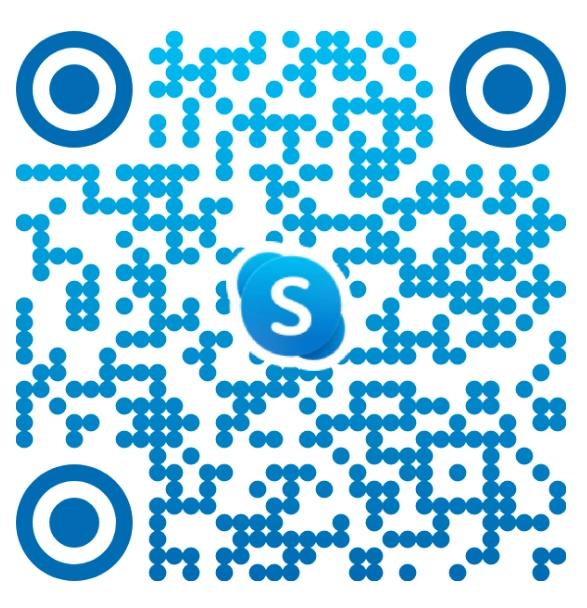Enhancing Enterprise Agility with AI-Powered Legacy Application Modernization
Introduction
In today’s rapidly evolving digital landscape, enterprise agility has become essential for survival. Organizations must quickly respond to shifting market demands, emerging technologies, and rising customer expectations. However, many still rely on outdated infrastructure—legacy systems that limit responsiveness and slow down innovation.
This is where legacy application modernization becomes crucial. By updating and transforming legacy systems, businesses can overcome these limitations. And when modernization is driven by AI in legacy application modernization, the results are smarter, faster, and more impactful. AI brings automation, data intelligence, and process optimization into the equation, helping enterprises modernize at scale.
Through AI-powered legacy application modernization, companies can reduce technical debt, streamline workflows, and make real-time, data-driven decisions. From intelligent code refactoring to automated testing and deployment, AI enables a more agile, efficient, and scalable transformation process.
In this blog, we’ll explore how combining AI with legacy modernization empowers businesses to unlock agility, efficiency, and growth. You’ll discover the benefits of using AI for legacy system upgrades, learn how to enhance enterprise agility with AI and legacy modernization, and find actionable strategies to begin your modernization journey.
What is Legacy Application Modernisation?
Legacy application modernization is the process of transforming outdated or obsolete software systems to align with current business demands and technologies. These systems—though still operational—often struggle with performance, integration, and scalability in today’s digital ecosystem. The goal of modernization is to enhance agility, efficiency, and scalability while enabling integration with cloud-native infrastructure, AI technologies, and modern development frameworks.
When enhanced with AI in legacy application modernization, this process becomes more intelligent, efficient, and predictive. AI can help analyze code, automate refactoring, and optimize data workflows—making legacy systems future-ready and adaptable to change.
Types of Legacy Systems
Common types of legacy systems include:
- On-premise ERP or CRM platforms
- Monolithic applications with tightly coupled components
- Software built using outdated languages or frameworks
- Applications with minimal API or cloud integration capabilities
Key Signs That a System Needs Modernization
- Frequent system crashes, downtime, or performance lags
- Difficulty integrating with modern tools or cloud platforms
- Poor user experience and outdated interfaces
- Increasing operational costs and maintenance complexity
What is a Legacy Application?
A legacy application is software developed using older technology stacks that are now considered outdated. While these systems may still serve critical business functions, they often limit innovation, scalability, and enterprise agility—hindering long-term growth and competitiveness.
Why Businesses Must Modernize Legacy Systems
Modern enterprises operate in an environment defined by speed, flexibility, and digital innovation. To stay competitive, organizations must evolve—and that means moving away from outdated technologies. Legacy application modernization is no longer optional; it’s a strategic imperative that enables enterprises to thrive in the age of AI, cloud, and automation.
Key Reasons for Companies to Modernize Legacy Apps
Enhance Operational Efficiency
Modernizing legacy systems streamlines processes, eliminates bottlenecks, and reduces manual intervention, improving enterprise-wide productivity.
Improve Customer Experience
Outdated applications often deliver poor user interfaces and slow response times. By updating these systems, businesses can offer faster, more intuitive digital experiences.
Support New Business Models
Legacy systems are often rigid and cannot support modern, agile operations such as mobile-first strategies, e-commerce, or remote collaboration.
Reduce Costs and Risks
Maintaining old systems is expensive and risky. Legacy application modernization reduces long-term costs and minimizes system failures or security breaches.
Risks of Sticking with Outdated Systems
Sticking with outdated systems puts your business at risk of security breaches, compliance failures, and lost opportunities. As technology evolves, legacy systems hinder scalability, innovation, and overall enterprise agility.
Increased Security Vulnerabilities
Legacy systems often lack modern security protocols and are more susceptible to breaches, malware, and cyberattacks. Without regular updates and patches, these outdated platforms create major security gaps that expose sensitive enterprise data to risk.
Inability to Meet Regulatory Compliance Standards
Regulatory bodies are constantly updating compliance standards to reflect modern technology and data practices. Legacy applications may not support required controls, logging, or encryption methods—making it difficult for organizations to meet GDPR, HIPAA, or industry-specific mandates.
Limited Scalability, Hindering Business Expansion
Old systems weren’t built to scale for today’s digital demands. Whether it’s integrating with cloud platforms or managing growing data volumes, legacy software limits your ability to expand operations efficiently. This directly impacts agility and slows down transformation efforts.
A Growing Competitive Disadvantage in the Market
While competitors invest in AI-powered legacy application modernization and cloud-native infrastructure, businesses that hold on to outdated systems fall behind. Inflexibility, slower response times, and higher operating costs make it harder to keep up with market expectations—damaging long-term competitiveness and innovation potential.
How Legacy Software Affects Growth and Competitiveness
Legacy systems slow down innovation by increasing development time and reducing flexibility. They also prevent organizations from harnessing technologies like AI in enterprise software modernization, cloud computing, and real-time analytics—all essential for future-ready business models and sustained growth.
Also Read : Integrating Legacy Systems with Agentic AI: Unlocking Intelligent Enterprise Transformation
Challenges in Traditional Modernisation Approaches
Modernizing legacy systems is essential, but traditional methods often come with significant roadblocks that delay transformation and increase risk. Below are the key challenges enterprises face when using conventional approaches without the support of AI-driven tools.
High Cost and Time Investment
Conventional application modernization can be both costly and time-intensive. Manual code rewrites, exhaustive testing phases, and system migrations require significant time, effort, and financial resources—slowing down digital transformation initiatives and reducing ROI.
Lack of Skilled Resources
Many legacy systems rely on outdated programming languages and frameworks, such as COBOL or older .NET versions. Skilled professionals who understand these technologies are becoming increasingly rare, making it difficult for businesses to execute legacy application modernization effectively.
Integration Limitations and Technical Debt
Older systems often lack compatibility with modern platforms like mobile apps, APIs, and cloud-native infrastructure. As a result, organizations accumulate technical debt—making systems harder to maintain, scale, or secure in the long run.
Security and Compliance Roadblocks
Traditional systems typically do not meet today’s advanced security standards. They may lack proper encryption, audit trails, or compliance frameworks, exposing businesses to security vulnerabilities, data loss, and regulatory penalties.
The Link Between Legacy Modernisation and Enterprise Agility
Modern businesses must be responsive, innovative, and ready to pivot—traits that define enterprise agility. However, agility becomes difficult to achieve when organizations are held back by outdated systems. This is where legacy application modernization becomes critical.
Understanding Enterprise Agility
Enterprise agility refers to a company’s ability to quickly respond to market shifts, customer needs, and technological disruptions. Agile enterprises innovate faster, make informed decisions, and deliver value more consistently—helping them stay ahead of the curve in a rapidly evolving digital economy.
How Outdated Systems Hinder Agility
Legacy systems often rely on manual processes, outdated architectures, and rigid workflows. These factors slow down development cycles, create integration challenges, and limit flexibility. Without modernizing legacy applications for agility, businesses struggle to innovate or respond quickly to new opportunities.
Benefits of Modernization for Business Responsiveness
- Faster deployment of new features thanks to AI-driven automation and modular design
- Improved collaboration across departments through integrated, cloud-ready systems
- Enhanced ability to pivot and scale, enabling enterprises to launch new services and enter new markets with confidence
By embracing AI-powered legacy application modernization, businesses can remove operational bottlenecks and unlock the full potential of agile transformation.
Also Read : Integrating AI Agents with Legacy Systems Using API Wrappers and Interpreters
How to Implement AI in Legacy Application Modernisation
Integrating AI in legacy application modernization allows enterprises to replace rigid, outdated systems with intelligent, scalable AI solutions that fuel innovation and responsiveness. Here’s how to implement AI effectively as part of your modernization journey.
1. Assess Readiness and Choose the Right Modernization Approach
Before diving into technology, it’s essential to understand your starting point and align goals.
Conduct a System Audit
- Evaluate system architecture, codebase, performance, and integrations.
- Identify outdated components and areas with high maintenance costs.
Identify High-Impact Areas for AI Integration
- Spot functions where AI can deliver immediate value—like automation, prediction, or optimization.
- Prioritize modules that frequently require manual input or testing.
Define Clear Modernization Goals
- Link modernization efforts to measurable business outcomes (e.g., agility, scalability, cost reduction).
- Determine whether to rehost, replatform, refactor, or rebuild.
Evaluate Risks and Dependencies
- Understand potential disruptions during migration.
- Assess compliance and data security implications.
2. Selecting AI Tools and Frameworks
Not all tools fit every scenario—selection should be tailored to your system’s needs and enterprise goals.
Consider the Legacy System Type
- Older mainframe or monolithic systems require more complex transformation.
- Cloud-hosted or hybrid systems may allow for easier AI integration.
Match Tools to Use Cases
- Use AI for automation (e.g., test automation tools, CI/CD pipelines).
- Use AI for data extraction and structuring from unstructured legacy databases.
- Use AI for anomaly detection, improving real-time system reliability.
Ensure Integration Capabilities
- Choose tools that support APIs, microservices, and your preferred cloud platform.
- Confirm compatibility with your existing infrastructure and security protocols.
Evaluate Tool Scalability and Support
- Prefer platforms with community support or enterprise-grade documentation.
- Opt for tools that grow with your modernization journey.
3. AI in Data Mapping, Code Conversion, and Workflow Automation
AI helps speed up some of the most complex and manual modernization tasks.
Intelligent Code Conversion
- Translate legacy languages like COBOL or VB into Java, .NET, or Python.
- Use AI models trained on large codebases to reduce human error.
Automated Data Mapping
- Automatically align data fields between old and new systems.
- Use machine learning to predict relationships between datasets.
Workflow Automation and Testing
- Implement AI-powered bots for regression, unit, and integration testing.
- Automate configuration, monitoring, and deployment pipelines.
4. Define Team Roles and Skill Requirements
Successful modernization depends on assembling the right talent with cross-functional capabilities.
Data Scientists
- Build and fine-tune AI/ML models for code analysis, testing, and prediction.
Software Engineers
- Integrate AI tools with applications, ensure code quality, and oversee deployment.
Business Analysts
- Map business requirements to technical features.
- Ensure modernization efforts deliver business agility and ROI.
Cloud Architects
- Design and manage cloud-native or hybrid infrastructure.
- Ensure secure and scalable AI integration into enterprise systems.
Change Management Leads (Optional but Valuable)
- Facilitate training and adoption across teams.
- Help reduce resistance to change and support culture shift toward automation.
By following these structured steps, enterprises can successfully adopt AI-powered legacy application modernization and unlock the benefits of legacy modernization for business agility, scalability, and innovation.
Key Components of AI-Powered Modernisation Strategy
An effective AI-powered legacy application modernization strategy involves four key components that help enterprises transform outdated systems into scalable, intelligent, and future-ready solutions.
1. Application Assessment and Data Mining
AI tools enable in-depth analysis of code complexity, usage trends, and system dependencies. By applying intelligent data mining techniques, businesses can extract valuable insights from legacy data, helping identify which modules require attention and how best to structure them for modernization.
2. Application Refactoring with AI
With the help of AI, organizations can identify tightly coupled components and restructure them into modular, scalable units. AI also assists in rewriting outdated code into modern languages, which not only reduces manual effort but also improves maintainability and supports legacy modernization for business agility.
3. Automated Migration and Deployment
AI simplifies the migration process by automating data mapping, validation, and transfer between systems. It also supports application containerization and intelligent deployment across cloud platforms, enabling faster, more reliable releases and reducing downtime during modernization.
4. Monitoring and Continuous Improvement with AI
After deployment, AI continuously monitors system performance, detects anomalies, and suggests real-time optimizations. This enables predictive maintenance and ensures that the modernized system remains agile, efficient, and aligned with evolving business needs.
Top Benefits of AI-Driven Legacy System Modernisation
Embracing AI in legacy application modernization unlocks a range of strategic advantages that drive agility, innovation, and long-term efficiency across the enterprise, especially when you hire machine learning experts to guide the transformation.
Faster Modernization Cycles
AI automates time-consuming tasks like code analysis, data mapping, and testing—drastically reducing the time needed to modernize legacy systems and accelerating digital transformation.
Reduced Technical Debt
By replacing outdated code and removing redundant components, AI helps eliminate accumulated technical debt. This results in more maintainable systems and smoother future upgrades.
Enhanced Scalability and Performance
Modernized applications powered by AI are better equipped to scale across cloud platforms and distributed architectures. They deliver improved performance, stability, and responsiveness under varying loads.
Improved User Experience and Agility
Legacy application modernization using AI leads to faster, more intuitive interfaces and seamless functionality. This enhances both internal productivity and customer satisfaction while supporting enterprise agility.
Data-Driven Decision-Making with Intelligent Analytics
AI unlocks insights from legacy data, enabling smarter business decisions through predictive analytics, performance metrics, and real-time monitoring—supporting continuous improvement and innovation.
Legacy Modernisation Services and Tools
To successfully execute legacy application modernization using AI, enterprises must select the right combination of services and tools that align with their goals, timelines, and infrastructure.
Popular Legacy Modernization Services and Providers
Leading providers like IBM Application Modernization, AWS Mainframe Modernization, and Microsoft Azure Modernization Tools offer enterprise-grade solutions for transforming outdated systems into agile, scalable platforms. These services simplify the modernization process by providing automation, support, and cloud-native environments.
AI Tools for Application Modernization
Cloud platforms also offer powerful AI tools to support modernization. Solutions like Google Cloud AI, Azure AI, and AWS AI/ML services assist with everything from code refactoring to data migration and predictive analytics, helping accelerate transformation while minimizing risk.
Choosing the Right Strategy for Your Enterprise
Every business has unique needs, so choosing the right legacy modernization strategy requires a tailored approach. Evaluate your options based on available budget, project timeline, existing IT infrastructure, and long-term business objectives to ensure the strategy delivers both value and agility.
Application Modernisation Strategy Framework
Creating a strong strategy is key to unlocking the full potential of AI-powered legacy application modernization. Leveraging digital transformation consulting services ensures a structured roadmap where every step aligns with your enterprise’s long-term goals.
Roadmap for AI-Powered Modernization
Start by assessing your current systems to identify bottlenecks, technical debt, and integration gaps. Define clear business goals—such as boosting agility or reducing costs—to guide the modernization process. Based on your needs, choose an approach like rehosting, replatforming, or refactoring. Then, integrate AI-driven tools for automation and analytics, followed by implementation and continuous monitoring for long-term optimization.
Build vs. Buy Decisions
Decide whether to develop modernization capabilities in-house or partner with legacy modernization services. Building internally offers control but requires resources, while outsourcing accelerates deployment and brings in proven expertise from vendors like IBM, AWS, or Azure.
Alignment with Enterprise Goals
Ensure every modernization effort aligns with your broader enterprise goals—whether that’s enhancing enterprise agility, driving innovation, or improving customer experiences. AI-driven strategies should directly support business outcomes and position your systems for the future.
Challenges in AI-Based Legacy Application Modernisation
While AI-powered legacy application modernization offers transformative benefits, the journey also comes with specific challenges that enterprises must prepare for—making the support of AI consulting services essential.
Data Quality and Unstructured Formats
AI models rely on clean, structured, and labeled data to generate accurate outputs. Legacy systems often store fragmented, outdated, or unstructured data, making preprocessing a critical but time-consuming step in any AI-based legacy software upgrade.
Resistance to AI Adoption Within Teams
Many teams are hesitant to embrace AI due to fears of job disruption or a lack of familiarity with new tools. Effective change management, clear communication, and proper training are essential to build confidence and encourage adoption across departments.
Security and Regulatory Concerns
AI adoption must align with strict data protection and compliance standards like GDPR, HIPAA, or ISO. Ensuring privacy, transparency, and secure handling of sensitive data is a must during AI in legacy application modernization.
Managing the Shift from Rule-Based to Learning-Based Systems
Moving from static, rule-based architectures to dynamic AI-driven models involves a fundamental change in mindset. Organizations must address concerns around explainability, model bias, and ethical AI to ensure long-term trust and usability.
Real-World Examples of Legacy System Modernisation
Real-world success stories highlight the transformative power of AI-powered legacy application modernization across industries. These examples show how enterprises are using AI to unlock agility, scalability, and efficiency.
Case Study 1: Financial Enterprise Agility Through AI
A leading global bank modernized its COBOL-based mainframe system using AI-based refactoring tools. By automating code conversion and optimizing workflows, the bank reduced transaction processing time by 40% and significantly enhanced its enterprise agility with AI.
Case Study 2: Healthcare Legacy Transformation
A healthcare provider leveraged AI in legacy application modernisation to revamp its patient management system. Real-time data access, predictive analytics, and workflow automation led to faster diagnostics and improved patient outcomes, showcasing the power of AI-driven automation in critical industries.
Examples of Legacy Systems and Their AI-Led Outcomes
- COBOL-based banking applications were transformed using AI-driven code translation, enabling seamless migration to cloud-ready environments.
- Retail inventory management systems were upgraded with AI-powered platforms, improving stock accuracy and scalability through real-time analytics.
Future Trends in Legacy Modernisation with AI
As technology evolves, so does the approach to legacy application modernization using AI. The future will be shaped by smarter tools, continuous automation, and deeper integration with cloud technologies.
Predictive Modernization Using AI
AI will soon predict system bottlenecks and performance issues before they occur, allowing businesses to modernize proactively. This predictive capability helps reduce downtime and supports long-term enterprise agility with AI.
Generative AI in Code Conversion and Optimization
Emerging tools like GitHub Copilot and Google’s AlphaCode are redefining how legacy code is refactored. These generative AI models assist in rewriting outdated code faster and more accurately, speeding up the modernization lifecycle.
Continuous Modernization Through AI Monitoring
Modern systems won’t rely on one-time upgrades. AI agents will continuously monitor performance, detect anomalies, and recommend improvements—creating an environment of AI-driven automation that evolves over time.
Integration with Cloud-Native and Serverless Tech
Legacy systems will increasingly transition to microservices, containers, and serverless frameworks. AI will streamline this shift, enabling seamless modernization that aligns with modern infrastructure and supports scalability.
Why Choose Amplework for AI-Powered Legacy Application Modernisation?
Amplework is a prominent AI development agency that specializes in transforming outdated enterprise systems into agile, AI-enabled solutions that drive innovation and scalability. Our team blends deep expertise in legacy application modernization using AI with a strong understanding of modern enterprise needs, ensuring your systems are not just updated but future-ready.
We leverage cutting-edge tools and frameworks to streamline code conversion, automate workflows, and integrate cloud-native technologies. From assessment to deployment, our approach is tailored to your infrastructure, business priorities, and modernization goals.
With Amplework, you gain a partner that understands the complexities of legacy system modernization in enterprises and delivers measurable outcomes—faster time-to-market, reduced technical debt, enhanced performance, and enterprise agility through AI.
Choose Amplework to unlock smarter modernization with minimal disruption and maximum impact.
Final Words
Legacy application modernization is no longer just a technical upgrade—it’s a strategic necessity in today’s digital-first, fast-paced environment. Outdated systems restrict growth, agility, and innovation, while modernization opens the door to future-ready operations.
When enhanced by AI in legacy application modernization, the transformation process becomes faster, more intelligent, and better aligned with evolving enterprise goals. From automation and real-time analytics to predictive maintenance and improved scalability, AI ensures modernization is not just reactive but proactive.
By embracing AI-powered legacy application modernization, enterprises can overcome traditional system limitations, accelerate decision-making, and build the agility needed to stay competitive. If your business is still operating on legacy systems, now is the time to act—invest in an AI-driven strategy that’s tailored to your unique challenges and long-term vision.
Frequently Asked Questions (FAQs)
What is legacy application modernization, and why is it important?
Legacy application modernization is the process of updating outdated software systems to align with modern technologies like cloud and AI. It’s essential for improving scalability, security, performance, and ensuring businesses stay competitive in a fast-changing digital environment.
How does AI help in legacy application modernization?
AI accelerates the modernization process through automated code analysis, intelligent data mapping, and predictive system monitoring. It reduces manual effort, speeds up deployment, and enhances overall system efficiency and agility.
What are the key benefits of AI-powered legacy modernization for enterprises?
Key benefits include faster modernization cycles, reduced technical debt, improved scalability, better user experiences, and data-driven decision-making, especially when you hire AI developers, leading to increased enterprise agility and long-term innovation.
Which AI tools are used for modernizing legacy applications?
Popular tools include Google Cloud AI, Azure AI, and AWS AI/ML services, which assist in code conversion, data transformation, automation, and performance monitoring during the modernization process.
How do I start modernizing my legacy systems using AI?
Begin by auditing your current systems, identifying modernization goals, and choosing the right AI tools or service providers. A structured roadmap—assessing readiness, selecting the approach, and continuous monitoring—is crucial for success.


 sales@amplework.com
sales@amplework.com
 (+91) 9636-962-228
(+91) 9636-962-228





